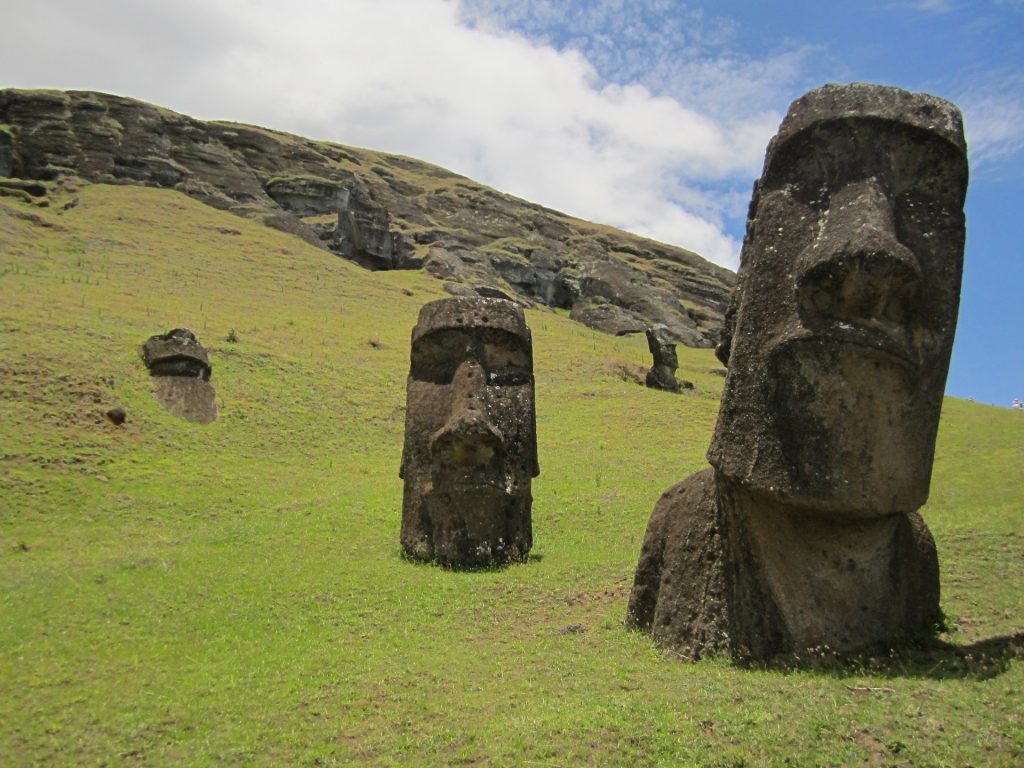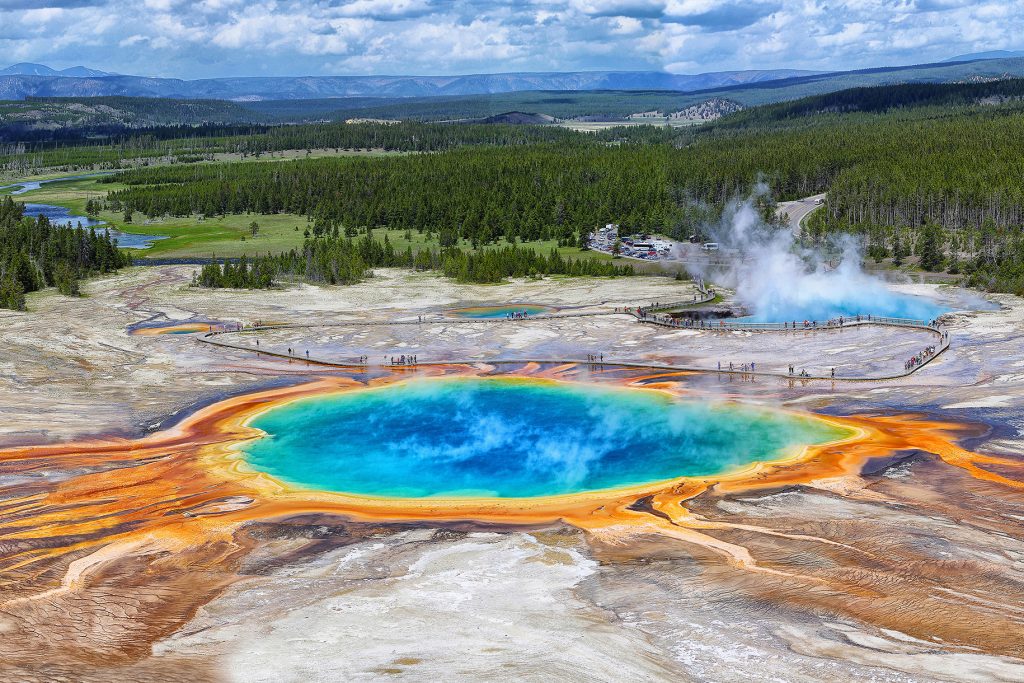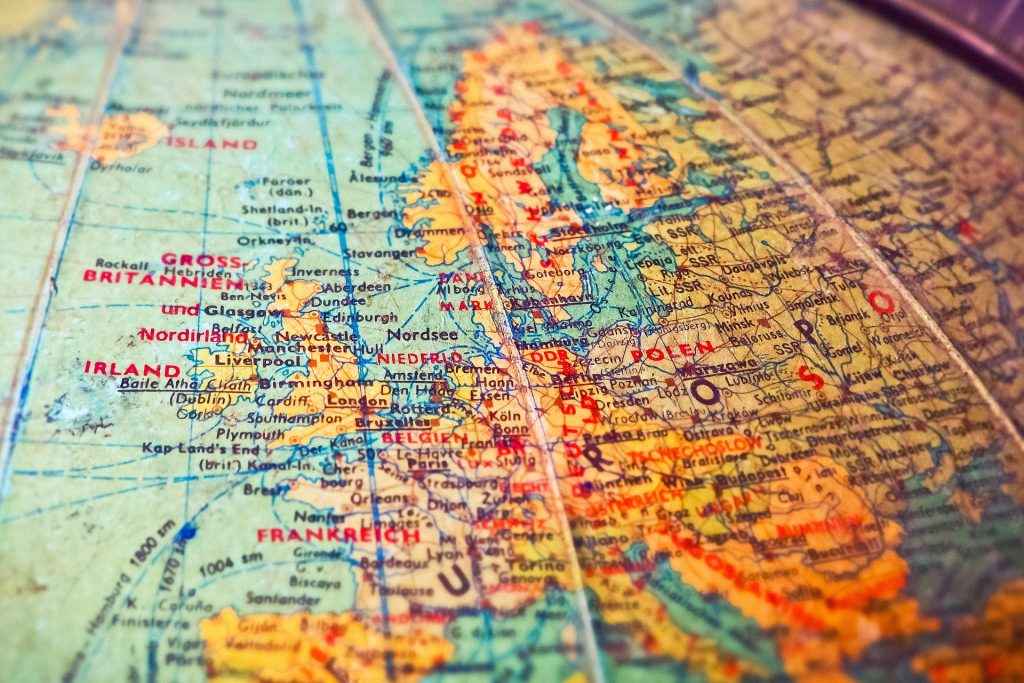Crash Landing
Imagine being a Nasa astronaut in the early 2000s. You launch from the Kennedy space center to rapturous applause from the crowds of south Florida. You successfully make orbit, perhaps to service the hubble space telescope or to deliver essential supplies to the International Space Station. Your mission is a success and you start the re-entry procedure. Everything seems fine for the first few minutes, but then things start to go wrong. There are technical malfunctions. Through a combination of sublime skills of the pilots and absolute luck you are still in one piece as the shuttle approaches low earth orbit. You’re getting close to commercial air travel altitudes and still no catastrophe.
You now have another problem. You are over the vastness of the Pacific ocean and have no chance of making it to the planned landing runway. Luckily, the clever people of Nasa thought of this eventuality. Scattered throughout the world at semi-regular intervals are a series of emergency landing sites for exactly this eventuality. The pilots scan the charts, they find just such a runway, seemingly floating in the middle of the South Pacific. Minutes later, you successfully land at Matertivi airport. You have touched down and are still in one piece. You breathe the mother of all sighs of relief. But, where on earth are you? Where is this miracle runway sticking out of the ocean? You are of course, on the tiny island of Rapa Nui. Better known as Easter Island.
Luckily, the shuttle never had to make use of this or any of the 50 or so designated emergency landing sites. In avoiding this particular emergency, those astronauts missed out on a fascinating island. Easter Island is one of the most isolated inhabited islands in the world. Located in the southeastern Pacific Ocean, it is 3512km from the South American mainland and 2,075 from its nearest inhabited neighbour. The island’s remote location, intriguing history, and unique cultural heritage make it a fascinating subject for study and exploration. This article explores Easter Island’s volcanic birth, its physical landscape, political structure, history, and cultural significance, including the world famous Moai statues and Birdman cults, as well as its modern-day status and tourism.
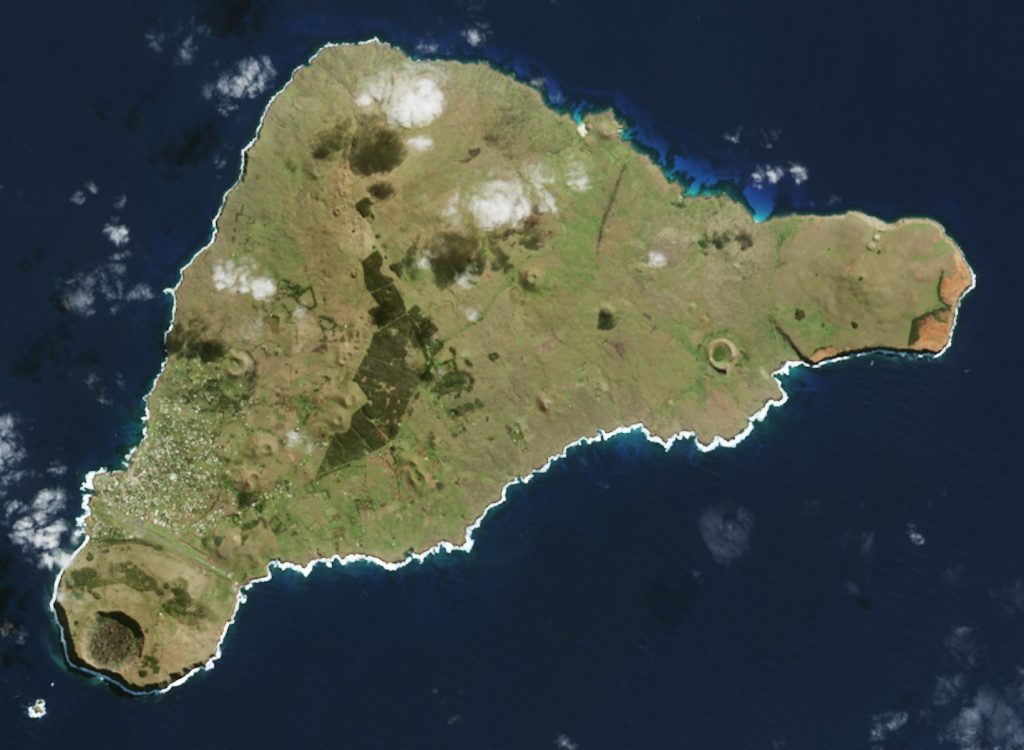
Easter Island was formed by volcanic activity that began approximately three million years ago. The island’s creation is attributed to the Easter Hotspot, a volcanic hotspot in the Earth’s mantle that caused magma to rise and create volcanic eruptions. Over time, The eruptions broke the surface at Easter Island, as well as a number of other island chains such as the Sala y Gomez islands.
The Three Volcanoes
Easter Island is roughly triangular in shape, covering an area of 163.6 square kilometers (63.1 square miles). Its maximum length from east to west is about 24 kilometers (15 miles), and its maximum width from north to south is around 12 kilometers (7.5 miles). The island’s coastline is rugged, with numerous cliffs and rocky shores, and only a few sandy beaches.
Terevak
Terevaka, the youngest and largest of the three volcanoes, forms the northern portion of the island. It formed about 300,000 years ago. Its gentle slopes rises to 507 meters (1,663 feet), making it the highest point on Easter Island. Its commanding view and easy access makes the summit a popular attraction for tourists on both foot or horseback.
Poike
Situated on the easternmost tip of the island, Poike is the second oldest volcano, with its formation dating back to approximately 2.5 million years ago. It is less eroded than Rano Kau and has a more distinct conical shape. The Poike peninsula is generally the least visited part of the island
Rano Kau
Whilst Poike and Terevaka may be taller in elevation, they lack the drama of the third peak. Rano Kau. Located in the southwestern part of the island, Rano Kau is the oldest of the three volcanoes, estimated to have formed around 2.5 million years ago. It features the largest crater of the three. Its steep sided cliffs raise 324 meters above the ocean beneath and its enormous crater contains one of just three natural bodies of fresh water on the island. The Pacific ocean is working relentlessly to reclaim the volcano and the south-west corner of the crater is slowly collapsing. Sitting on the south-west cliff, overlooking the islands of Motu Nui and Motu Iti is the ceremonial village of Orongo. Should our intrepid astronauts have needed to make use of Matertivi airport, they would have landed on a flat plain wedged between the base of Rano Kau and the only major town of Hanga Roa.
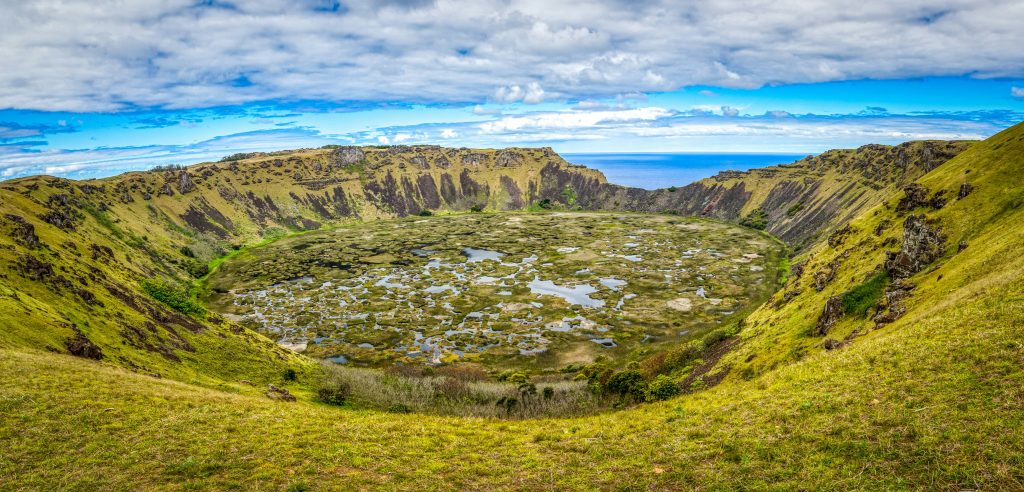
Whilst we list only three named volcanoes, in actual fact, the entire island is covered with calderas, lava tunnels and other volcanic structures such as the cinder cone of Puna Pau just outside the main town of Hanga Roa or the crater of Rano Raraku from which the stone moai were carved.
Discovery
Long before European contact, Easter Island was settled by Polynesian navigators. Over the course of possibly many centuries, the Polynesian people gradually spread eastwards from the western Pacific. The exact arrival at Easter Island is unknown, but some time between the 10th and 13th century AD, an intrepid bunch of sailors led by the mythical (and possibly fictitious) Hotu Matu’a pointed their double hulled canoes to the horizon and set sail. They set sail from their home of Hiva, which has been claimed to be in the Marquesas Islands, Gambier islands, Mangareva island, and many other places in eastern Polynesia.
The exact location of Hiva is probably lost to time. What we do know is that after possibly many days, they spotted land, and arrived at the picture postcard beach of Anakena. They called their new home Te-Pito-te-Henua, literally translated as “end of the land”. The beach at Anakena is one of the few areas of the Easter Island coastline where boats can safely land.
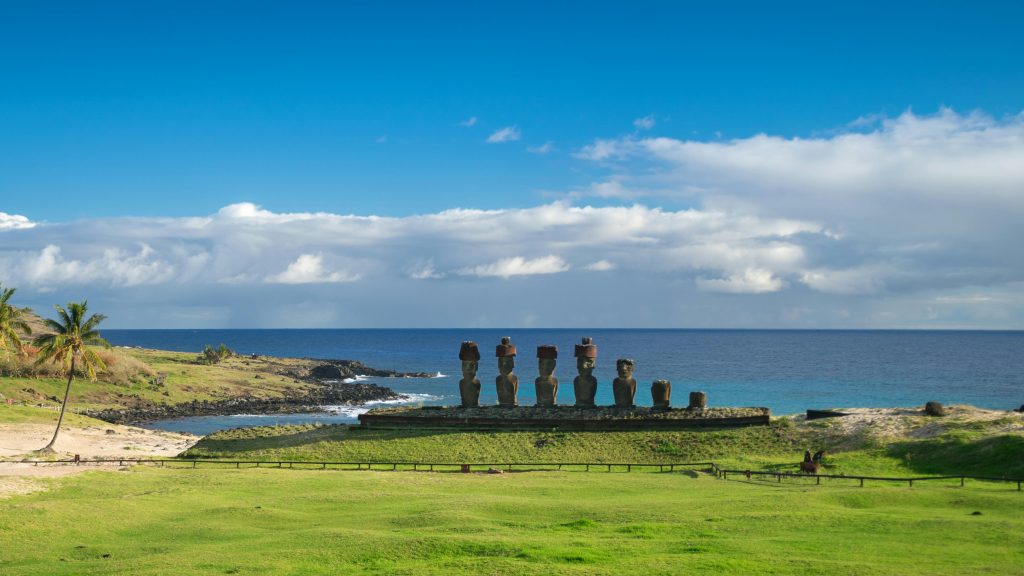
Whilst much of this original colonization shrouded in mystery, we can safely suppose that the size of the boats available would require several such journeys to establish a breeding population, meaning that there must have been some back and forth traffic between Easter Island and their home of Hiva. All of this points to a sophisticated seafaring culture capable of completing journeys of many thousands of miles and navigating with accuracy enough to pinpoint tiny islands in the vastness of the Pacific Ocean. They brought with them some cultural practices that are unique and have come to be the defining symbol of the entire island.
European Discovery
Easter Island was first discovered by Europeans on April 5, 1722, by Dutch explorer Jacob Roggeveen. He named it Easter Island for no other reason than he first set eyes on it on Easter Sunday. By Roggeveen’s accounts, initial interactions with the Rapa Nui people were amicable. He made written accounts of the appearance and dress of the natives, noted their cultural practices and made references to the structures of the society. However, despite the initial friendly exchanges, several misunderstandings, a lack of a common language and cultural clashes led to ever more serious skirmishes until several Rapa Nui were killed.
Whilst the accounts of the violence are entirely one sided, it appears that Roggeveen’s demands for food and supplies eventually led to violence and death. There is no account of the encounter from the perspective of the Rapa Nui, but one can only assume it soured their attitudes to European explorers. The next two centuries of conflict, disease and death will have done nothing to change their first impressions.
Moai

Easter island is perhaps most famous for its Moai. These monolithic human figures, carved from volcanic rock, were created to honor deceased ancestors and were believed to hold spiritual power. Radiocarbon dating has put the first Moai somewhere around 1250 AD. These first Moai were between 3 and 5 meters tall and were relatively simply carved. All of the Moai, from all corners of the island, were carved from a single quarry at Rano Raraku.
By the time of Roggeveen’s visit, the Moai had doubled in size to an average of 6 meters. The tallest Moai ever erected is known as Paro, which stands at about 10 meters (33 feet) and weighs approximately 82 tons. There is an unfinished Moai, still attached to the rock in the Rano Raraku quarry, that would have been around 21 meters (69 feet) tall if completed. The later Moai were also significantly more intricately carved with prominent features, elongated ears and intricately carved glyphs. The rear of the head and upper back of several Moai were carved with particular care and attention. By the 15th and 16th centuries, the more significant Moai were also adorned with a hat-like addition called a Pukao. Some of these Pukao were 10 tonnes in weight. They were also all mined from the small crater of Puna Pau. This was the only source of red scoria rock on the island.
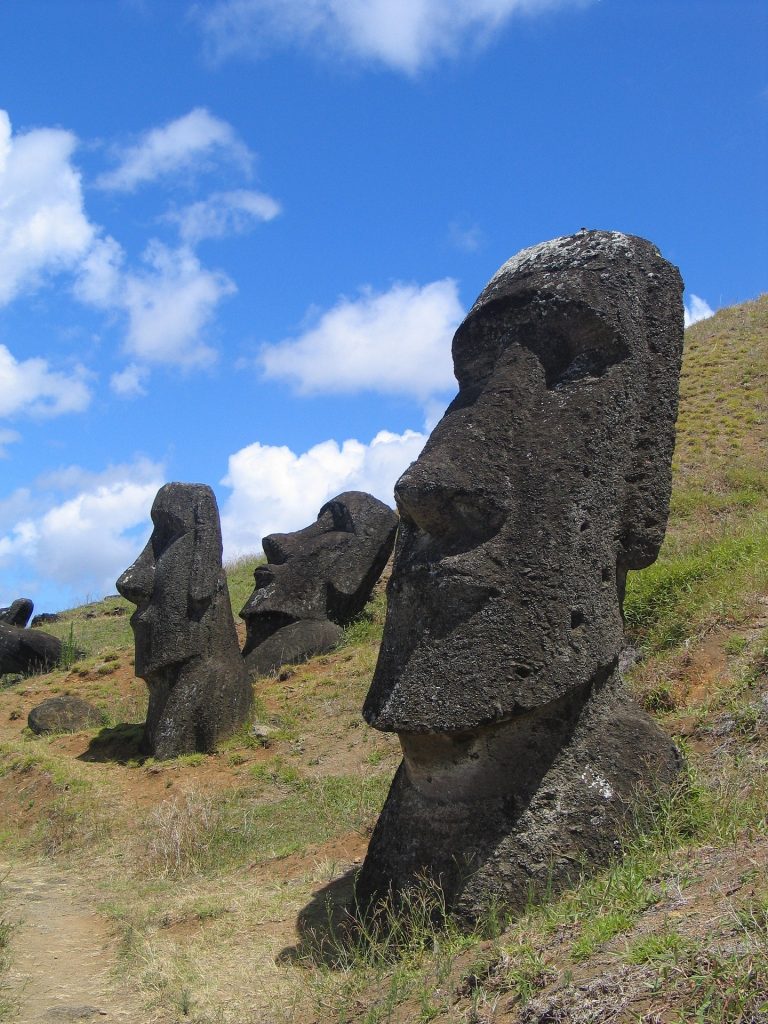
Walking Heads
The exact methods used for transportation remain a topic of debate, with theories falling into two main camps. The first is some combination of sledges and rollers. Thor Heyerdahl, an eccentric Norwegian explorer, was the first to propose and test the idea of moving moai on sledges sat on wooden log rollers. Several others, most notably Jo Anne Van Tilburg and Charles Love also subscribed to this view.
The second major theory is that the Moai were ‘walked’ to their destination using ropes to swing the Moai back and forth. This theory was first proposed in the 1980s by Pavel Pavel, a Czech engineer who tested the theory alongside none other than Thor Heyerdahl. This was further developed by Carl Lipo and Terry Hunt who successfully moved a full sized Moai a significant distance in 2012.
However they were moved, the Moai held deep cultural significance to the people of Rapa Nui. As with so much of Rapa Nui traditions and culture, it is not entirely clear exactly what the Moai represented. Many think the Moai represented the ancestors of the island’s clans and were believed to protect and provide for the living.
The construction and placement of the Moai were closely tied to the island’s social and political structure. Each clan or family group was responsible for the creation of their own Moai, and the size and grandeur of the statues signifed the clan’s status and influence.
Almost immediately after that fateful visit of Roggeveen on Easter Sunday, it seems the society on Rapa Nui fell into chaos, the population collapsed, relatively minor European diseases caused death on a massive scale, war between tribes became common, there are some theories of cannibalism being practiced, others suggest that the reason for this collapse is the felling of trees to fuel the ever increasing demand for resources. What is certain is that by the time of James Cook’s visit in 1774, it was reported that the majority of the Moai had been toppled, formally farmed land had ceased to be productive, buildings had fallen into disrepair. In just 50 short years a thriving civilisation was brought to its knees.
The Birdman
As the construction of Moai declined, a new religious practice known as the Birdman cult (Tangata Manu) emerged around the 16th century. The Birdman cult centered around the village of Orongo, located on the rim of the Rano Kau crater. Each year, a competition was held with the champions from each tribe setting off from high on the cliffs of Rano Kau, scaling down the steep rock faces, enter the violent swells of the Pacific ocean, braving strong currents, sharks and jelly fish to swim the 1km to the tiny island of Motu Nui. Here they would once again scale the steep cliffs to retrieve a single egg from a Sooty Tern (Manu Tara). They would then retrace their steps and present the egg to their tribal leader. The first to return was declared the Birdman and held a position of high status for the year. It was seemingly a way for the islanders to maintain some sort of order and fairly distribute the meager and dwindling resources of the island without resorting to violence.
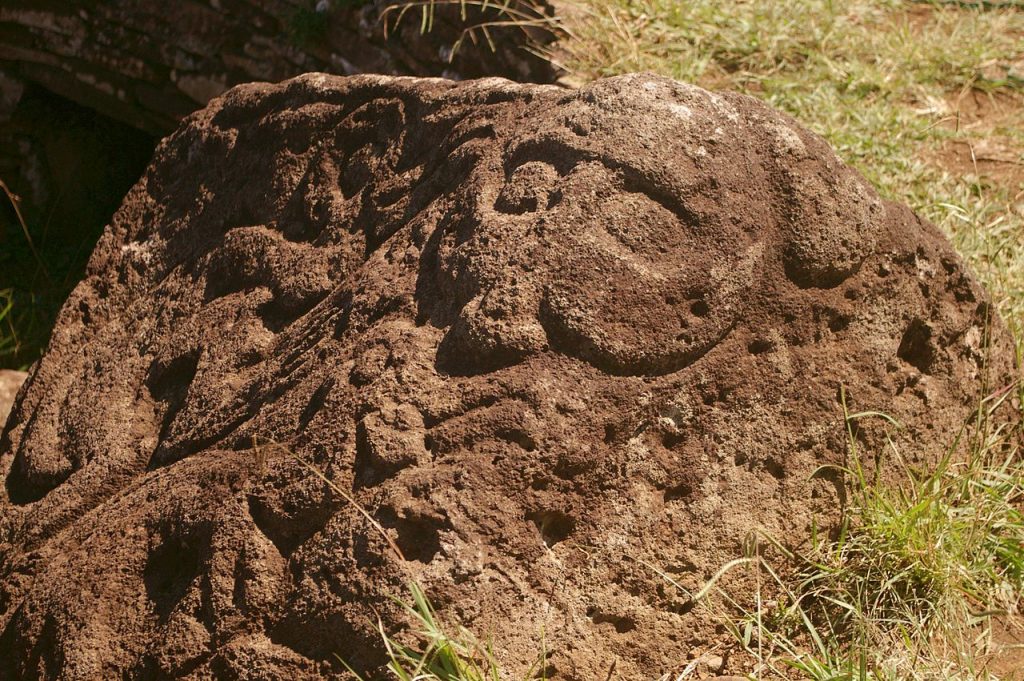
Throughout this period, Easter Island became a fairly frequent stop off point for whaling ships heading to the South Pacific and Southern Ocean. These ships often pressed local populations into service on, and ultimately ended up outright taking people into slavery. The local population valiantly maintained the Birdman cult until the 19th century when it was violently suppressed by Christian missionaries, to be replaced with christianity. However, its legacy remains an important part of Rapa Nui’s cultural heritage.
In 1868, HMS Topaze visited the island. There, Commodore Richard Powell visited the ceremonial and culturally significant village of Orongo. In the very center of the village stood a beautiful Moai, buried up to its waste. It was carved intricately with birdman iconography thus spanning the two major religions of the island. Powell ordered the Moai be dug out and shipped to Britain. To this day the Moai stands in the Wellcome gallery of the British Museum. The plinth upon which it was once stood is symbolically empty.
Easter Island Today
Easter Island was annexed by Chile in 1888. In 1903, Williamson Balfour and Co. set up, with seemingly no sense of irony or moral reservations, the Easter Island Exploitation Company. The natives were rounded up and fenced into the town of Hanga Roa. The remaining island was turned over to sheep farming, with up to 70,000 sheep at any one time until the eventual dissolution of the company in 1953.
Today, Easter Island is part of the Valparaíso Region. The island has a municipal government, and its residents have Chilean citizenship. There are ongoing discussions and movements among the Rapa Nui people advocating for greater autonomy and recognition of their cultural heritage.
In 1995, Easter Island was designated a UNESCO World Heritage Site, recognizing its cultural and historical significance. The protection and preservation of the island’s archaeological sites and natural landscape have become priorities for both local authorities and international organizations.
Several conservation programs aim to protect and restore the island’s archaeological sites. This involves stabilizing structures, preventing erosion, and managing visitor access to sensitive areas. The restoration of cultural artifacts such as the rebuilding of the Ahu platforms and re-erecting of Moai has formed a major part of conservation efforts.
Excavation efforts such as the Rapa Nui Statues project (2000-2010) and the Anakena excavation (2011-2013) have added to the understanding of how moai were constructed, as well as unearthing several important artifacts such as stone and wood carvings. Many of these artifacts can be found in the charming Sebastian Englert museum on the island.
The Mana Te Moana Project focuses on restoring native vegetation to preserve the island’s biodiversity. Initiated by the Toki Foundation, the Mana Te Moana project emphasizes the importance of using native plants, such as the Toromiro (Sophora toromiro) and Makoi (Thespesia populnea). The project also involves community participation, educational programs, and research on native and invasive species.
Cultural Revitalisation
Easter Island has a vibrant and growing revitalisation of local custom and practice. The local language is being actively taught in schools and spoken on the island and beyond, traditional arts and crafts workshops and learning events are commonplace on the island. The transmission of oral histories are important aspects of maintaining the island’s cultural identity.
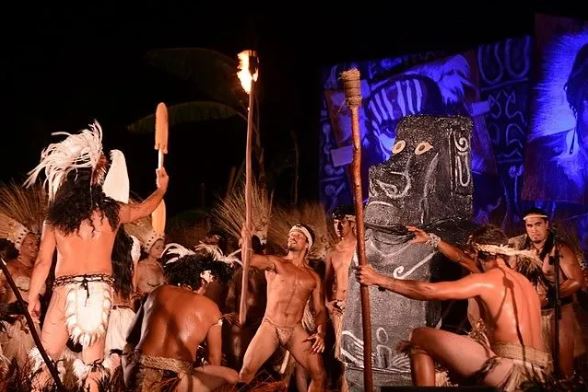
The festival of Tapati is held annually to showcase local craft, hold physical competitions and highlight traditions. The event is a celebration of the rich heritage that the island enjoys and has become a popular way for the local Rapa Nui people to showcase and share their culture with the wider world.
Easter Island, or Rapa Nui, is a place of cultural and historical significance. Its remote location, unique geological features, and rich cultural heritage make it a captivating destination for researchers, historians, and travelers alike. From its formation by volcanic activity to the population of the island by far away polynesians and its legacy of the Moai and Birdman cults, the island’s story is one of human ingenuity, resilience, and connection to the land.
Today, Easter Island faces both opportunities and challenges as it balances the preservation of its heritage with the demands of modern tourism. Sustainable practices, conservation efforts, and cultural revitalization are key to ensuring that this remarkable island continues to inspire and educate future generations.

